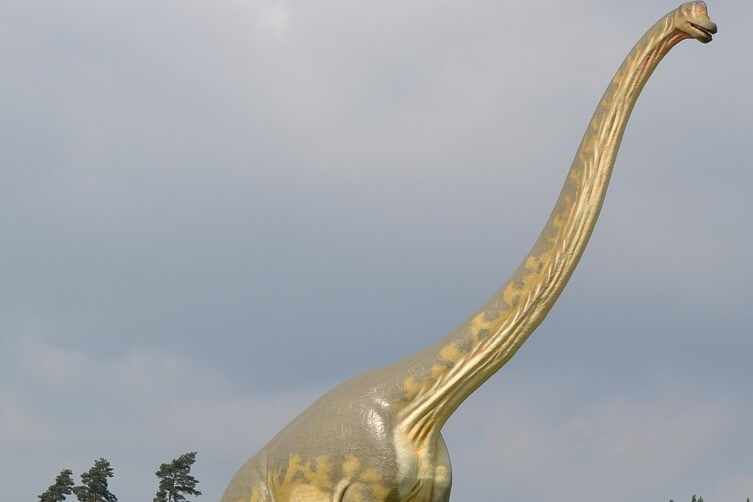Key Points:
- A new study from Adelphi University has revealed insights into how sauropods, including iconic dinosaurs like Brachiosaurus and Apatosaurus, achieved their record-breaking sizes over time.
- The study found that sauropods reached their exceptional sizes early in their evolution, with around three dozen instances over the course of 100 million years around the globe.
- The research contradicts the popular 19th-century theory that animal size evolves over time, and instead suggests that animals achieve different body sizes depending on their ecological context and available niches.
Sauropods, the largest animals to ever walk the earth, including iconic dinosaurs like Brachiosaurus and Apatosaurus, have been the subject of many scientific studies. Now, a new study from Adelphi University provides insights into how these super giants achieved their record-breaking sizes over time.
Paleontologist Michael D’Emic, assistant professor of biology at Adelphi University, conducted the research and explained the findings. He said it was previously thought that sauropods evolved their exceptional sizes independently a few times in their evolutionary history, but through a new analysis, we now know that this number is much higher, with around three dozen instances over the course of 100 million years around the globe.
To investigate sauropod body size evolution, D’Emic compiled measurements of the circumferences of hundreds of weight-bearing bones, correlated with the weight of the animal they belonged to. He then used a technique called ancestral state reconstruction to map the reconstructed body masses of nearly 200 sauropod species onto their evolutionary tree.
The results of the study showed that sauropods reached their exceptional sizes early in their evolution. With each new sauropod family to evolve, one or more lineages independently reached superlative status. These largest-of-the-largest sauropods were ecologically distinct, having differently shaped teeth and heads and differently proportioned bodies, indicating that they occupied the ‘large bodied’ niche somewhat differently from one another.
Additionally, microscopic study of their bones revealed that sauropods had different growth rates as well, suggesting that the record-setters were metabolically distinct. This pattern mirrors that in mammals, which evolved very large body sizes quickly in the wake of the dinosaur extinction, before plateauing in the gigantic-mammoth range.
The study contradicts “Cope’s Rule,” the popular 19th-century theory that animal size evolves over time. Instead, the new research sees animals achieving different body sizes depending on their ecological context and whatever niches happened to be available – which can appear random when looked at from a large scale.
D’Emic said, “While other researchers have explained sauropods’ immense size in general based on their unique combination of features, there is no one feature or set of features that characterize the sauropods that did surpass terrestrial mammal size from the ones that didn’t.”
The next step in the research will be to untangle why certain lineages evolved their super-giant sizes while others did not.
About Adelphi University
Adelphi University, New York, is a highly awarded, nationally ranked, powerfully connected doctoral research university. The university is dedicated to transforming students’ lives through small classes with world-class faculty, hands-on learning, and innovative ways to support academic and career success.
Adelphi offers exceptional liberal arts and sciences programs and professional training at the undergraduate and graduate level with particular strength in its Core Four – Arts and Humanities, STEM and Social Sciences, Business and Education Professions, and Health and Wellness.
Recognized as a Best College by U.S. News & World


